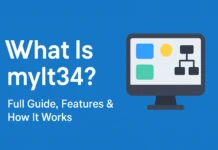Introduction
Image annotation (the process of labeling digital photographs and other images) is a complex task. While it can be accomplished purely through human labor, this is incredibly time-consuming, laborious, and often prohibitively expensive. Conversely, while an entirely automated approach is fast and low-cost, it often yields poor results. Data labeling tools for image annotation can streamline the process, allowing human workers to annotate images swiftly and accurately. In this article, you’ll learn more about image annotation and how the right image annotation tool can improve speed, accuracy and quality.
Image Annotation
The process of labeling (annotating) an image begins with selecting the kinds of information that the labels need to convey. This is usually done by a machine-learning engineer. The labels are selected to provide the computer vision model with the information it needs regarding the objects shown in the image. The process of determining labels also has another valuable function. It allows engineers to identify the most important elements of the image data, those which will determine how accurate the model can be.
How an Image is Annotated
The next step is the annotation process itself. Typically, a human worker will examine the image and place bounding boxes around relevant elements to distinguish them from the rest of the picture. These bounding boxes are then labeled according to the contents. In some cases, only a single bounding box might need to be used. In others, there may be multiple different types of objects that need to be categorized and labeled. The number of annotations required will vary greatly. Different projects will require different types of annotations in larger or smaller numbers.
Image annotation softwares facilitate this process. As well as a bounding box tool, a well-designed image annotation tool will have features like a freehand pen tool, which is used to delineate specific sections of the image for annotation.
Types of Image Annotation
There are several different types of image annotation. ML engineers and data scientists will select the types that are most relevant to the project at hand. The three most widely used image labeling types are object detection, whole image classification and image segmentation.
Classification is different to object detection in that the specific location of objects within the image is not important. The goal of image classification is to identify what properties and objects are present in an image, regardless of their location.
Image segmentation is a very detailed and in-depth type of image annotation. It’s also termed semantic segmentation. Instead of a handful of objects being delineated with a bounding box and assigned labels, image segmentation involves assigning every pixel in an image its own label. Pixels may be assigned more than one class. This type of image annotation is used in cases where it’s necessary to know if an image includes a specific object, alongside other properties.
With object detection, individual objects within a digital image are identified and annotated. Using an image markup tool, objects within an image are surrounded by bounding boxes and labeled appropriately. These bounding boxes may sometimes overlap.
The use of object detection with bounding boxes is standard in image annotation. It provides a balance between the generality of classification and the extreme detail of image segmentation. While more time-consuming than classification, object detection is much faster than segmentation.
Why Use Image Annotation Tools?
Image annotation tools are software applications that allow researchers and engineers to annotate images more speedily and accurately. A quality annotation tool is necessary for an image labeling project. Image annotation tools need to offer an advanced user interface with a set of features that help prevent tagging errors and streamline the labeling process.
Because image annotation is a highly complex task, often involving large numbers of people, it’s also important for an image annotation tool to offer workflow functionality. For example, it might be desirable to assign tasks to specific labelers. Tracking functionality is also important — it’s necessary to ensure that the work is accurate and correct.
Image annotation tools should also offer automation. Some image annotation tasks can be performed by AI. While human checks may still be necessary to ensure that labeling is accurate, automating the process makes it much faster and less demanding of human labor.
Most of all, an image annotation tool should support best practices in image labeling to ensure that machine learning models have access to accurate and relevant training data. A machine learning model is only as good as its training data. This is true for computer vision projects as well as other data labeling use cases.







